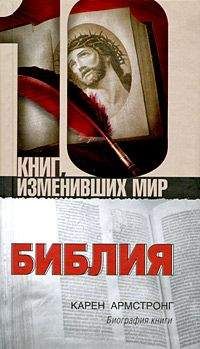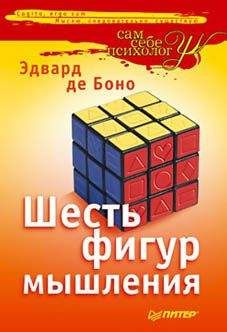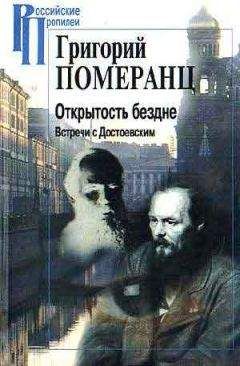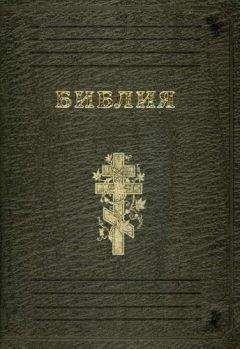366
Дионисий Ареопагит — имя первого человека, которого апостол Павел обратил в христианство в Афинах.
Дионисий Ареопагит, О таинственном богословии, 3.
Maximus, Ambigua, in Migne, Patrologia Greaca, vol. 91, p. 1085.
Рим. 13:13-14.
Августин Блаженный, Исповедь, VIII:XII, 29.
Ibid., VII:XVIII, 24
Ibid., XIII:XV, 18. Pamela Bright, «Augustine», in Holcomb (ed.), Christian Theologies of Scripture, pp. 39-50.
Исx. 33:23. Augustine, The Trinity, 2.16.27; G. R. Evans, The Language and Logic of the Bible: The Earlier Middle Ages, Cambridge, 1984, pp. 3-6.
Августин Блаженный, Исповедь, XII:XXV, 35.
Ibid.
Втор. 6:5; Мат. 22:37-39; Map. 23:30-31; Лук. 10:17.
Иоан. 5:10. Августин Блаженный, Исповедь, XII:XXV, 35.
Августин Блаженный, Исповедь, XII:XXV, 34-35.
Втор. 6:5; Мат. 22:37-39; Мар. 12:30-31; Лук. 10:17; Августин, Исповедь, XII:XXV, 35.
Beryl Smalley, The Study of the Bible in the Middle Ages, Oxford, 1941, p. 11.
D. W. Robertson (trans.), Augustine: On Christian Doctrine, Indianapolis, 1958, p. 30.
Ibid.
Augustine, On Psalm 98:1 in Michael Cameron. «Enerrationes in Psalmos», in Allen D. Fitzgerald (ed.), Augustine Through the Ages, Grand Rapids, 1999, p. 292.
1 Kop. 12:27-30; Кол. 1:15-20. Charles Kannengieser, «Augustine of Hippo», in Donald McKim (ed.), Major Biblical Interpreters, Downers Grove, Ill., 1998, p. 22.
Иоанн Кассиан, Собеседования, 1.17.2.
Ewart Cousins, «The Humanity and Passion in Christ», in Jill Raitt (ed.), with Bernard McGinn and John Meyendorff, Christian Spirituality: High Middle Ages and Reformation, London, 1988, pp. 377-383.
Григорий Великий, Гомилии на Иезекииля, 2.2.1.
Григорий Великий, Нравоучения на книгу Иова, 4.1.1. G. R. Evans, The Language and Logic of Bible: The Earlier Middle Ages, Cambridge, 1984, pp. 56, 143, 164.
Григорий Великий, Толкование на 1 книгу Царств, 1.
James F. МсСгае «Liturgy and Eucharist: West», in Raitt, Christian Spirituality, pp. 428-429.
Лук. 14:27.
Jonathan Riley-Smith, «Crusading as an Act of Love», History, 65, 1980.
Evans, The Language and Logic, pp. 37-47; Beryl Smalley, The Study of the Bible in the Middle Ages, Oxford, 1941, р. 31-57.
Ibid., pp. 121-127. Jaroslav Pelikan, Whose Bible Is It? A History of Scriptures Through the Ages, New York, 2005, p. 106.
Smalley, Study of the Bible, pp. 123
Йосеф Бехор Шор, Комментарии к книге Исхода, 9:8.
Гуго Сен-Викторский. Семь книг назидательного обучения, или Дидаскалион, 8-11; Smalley, Study of the Bible, pp. 69-70.
Smalley, Study of the Bible, pp. 86-154.
Ibid., p. 139.
Evans, Language and Logic, pp. 17-23.
Ансельм Кентерберийский, Cur Deus Homo, 1:11-12; 1:25; 2:4; 2:17.
Evans, Language and Logic, pp. 70-71; 134-141.
Бернар Клервоский, Письмо CXCI. 1.
Cp. 1 Кор. 13:12. Цит. по Henry Adams, Mont Stichael and Chartres, London, 1986, p. 296.
Wilfred Cantwell Smith, What is Scripture? A Comparative Approach, London, 1993, pp. 29-37; David W. Kling, The Bible in history: How the Texts Have Shaped the Times, Oxford and New York, 1994, pp. 96-112.
Irene M. Edmonds and Killian Walsh (trans.), The Works of Bernard of Clairvaux: On the Song of Songs, 4 vols, vol. 1, Spencer, Mass., vol. 2-4, Kalamazoo, Michigan, 1971-1980, vol. I, p. 54.
Ibid., vol. 2, p. 28.
Ibid., vol. 2, pp. 30-32.
Ibid., vol. 1, p. 2.
Ibid., vol. 4, p. 86.
Ibid., vol. 4.
Kling, The Bible in history, p. 103.
Edmonds and Walsh, On the Song of Songs, vol. 1, p. 16.
Evans, Language and Logic, pp. 44-47.
Henry Malter, Saadia Gaon, His Life and Works, Philadelphia, 1942.
Abraham Cohen, The Teachings of Maimonides, London, 1927; David Yellin and Israel Abrahams, Maimonides, London, 1903.
Moses Friedlander, Essays on the Wrighting of Abraham Ibn Ezra, London, 1877; Louis Jacob, Jewish Biblical Exegesis, New York, 1973, pp. 8-21.
Втор. 1:1; курсив мой. Этот стих не совпадает с текстом Иерусалимской Библии, но является буквальным переводом с древнееврейского, на котором читал Ибн Эзра. (В русском синодальном издании Ветхого Завета этот стих как раз совпадает с переводом, предложенным Карен Армстронг: «Сии суть слова, которые говорил Моисей всем Израильтянам за Иорданом» — прим. перев.)
Hayam Maccoby, Judaism on Trial: Jewish-Christian Disputation in the Middle Ages, London and Toronto, 1982, pp. 95-150; Solomon Shelter, Studies on Judaism, Philadelphia, 1945, pp. 99-141.
Moshe Idel, «PaRDeS: Some Reflections on Kabbalistic Hermeneutics», in John J. Collins and Michael Fishbane, The Garments of Torah, Essays in Biblical Hermeneutics, Bloomington and Indianapolis, 1989, pp. 8-21.
См. Глава 4.
Collins and Fishbane, Death, Ecstasy and Other-Worldly Journeys, p. 249-257; Michael Fishbane, The Garments of Torah, Essays in Biblical Hermeneutics, Bloomington and Indianapolis, 1989, pp. 113-120.
Cantwell Smith, What is Scripture? p. 112.
Gershon Scholem, «The Meaning of Torah in Jewish Mysticism», in On the Kabbalath and Its Symbolsm, translated by Ralph Manheim, New York, 1965, p. 33.
Ibid., pp. 11-158; Gershon Scholem, Major Trends in Jewish Mysticism, New York, 1995 edn, pp. 1-79, 119-243; Michael Fishbane, The Exegetical Imagination: On Jewish Thought and Theology, Cambridge, Mass., and London, 1998, pp. 99-126; Fishbane, The Garments of Torah, pp. 34-63.
Zohar, 1.15.a in Gershon Scholem (trans. and ed.), Zohar, The Book of Splendour; Basic Readings from the Kabbalah. New York. 1949, pp. 27-28.
Fishbane, The Exegetical Imagination, pp. 100-101.
Zohar, II.94b in Scholem, Zohar, The Book of Splendour, p. 90.
Ibid.
Ibid., p. 122.
Zohar, III. 152а in Scholem, Zohar, The Book of Splendour, p. 121.
Zohar, II. 182a.
A. Hudson, Selections from English Wycliffite Writings, Cambridge, 1978, pp. 67-68.
Jerry S. Bentley, The Humanists and Holy writ; New Testament Scholarship in Renaissance, Princeton, 1983; Debora Kuller Shuger, The Renaissance Bible, Scholarship, Sacrifice, Subjectivity, Berkeley, Los Angeles and London, 2004; Jaroslav Pelikan, Whose Bible Is It? A History of Through the Ages, New York, 2005, pp. 112-128; William J. Bouwsma, «The Spirituality of Renaissance Humanism», in Jill Raitt (ed.) with Berard McGinn and John Meyendorff, Christian Spirituality: High Middle Ages and Reformation, London, 1988; James D. Tracy, «Ad Fontes, The Humanist Understanding of Scripture», in Raitt (ed.) Christian Spirituality.
Charles Trinkaus, The Poet and Philosopher, Petrarch and the Formation of Renaissance Consciousness, New Haven, 1977, p. 87.
Цит. по: Alastair McGrath, Reformation Thought, An Introduction, Oxford and New York, 1988, p. 73.
Marc Leinhard, «Luther and the Beginnings of the Reformation» in Raitt (ed.), Christian Spirituality, p. 269.
Richard Marius, Martin Luther: The Christian between God and Death, Cambridge, Mass., and London, 1999, pp. 73-74, 213-215; 486-487.
G. R. Evans, The Language and Logic of the Bible: Reformation, Cambridge, 1985, p. 8.
Ibid., p. 100.
David W. Kling, The Bible in history: How the Texts Have Shaped the Times, Oxford and New York, 1994, pp. 120-149.
Philip S. Watson, Let God be God! An Interpretation of the Theology of Martin Luther, Philadelphia, 1947, p. 149.
Martin Luther, Luther’s Works (LW), 55 vols, edited by Jaroslav Pelikan and Helmut Lehmann, Philadelphia and St. Louis, 1955–1986, vol. 33, p. 26.
Emil G. Kraeling, The Old Testament Since the Reformation, London, 1955, pp. 145-146.
Пс. 71.
Пс. 70.
Leinhard, «Luther and the Beginnings of the Reformation», p. 22.
Рим. 1:17, цитируется Авв. 2:4.
McGrath, Reformation Thought, p. 74.
LW, vol. 25, pp. 188-189.
Martin Luther, Sermons, 25:7; LW, vol. 10, p. 239.
Mickey L. Mattox, «Martin Luther», in Justin S. Holcomb (ed.), Christian Theologies of Scripture, New York and London, 2006, p. 101; Jaroslav Pelikan, The Christian Tradition: Volume 4: Reformation of Church and Dogma, Chicago and London, 1984, pp. 168-171; Leinhard, «Luther and the Beginnings of the Reformation», pp. 274-276.
Scott H. Hendrix, Lither and the Papacy: Stages in a Reformation Conflict, Philadelphia, 1981, p. 83; Roland H. Bainton, Here I Stand: A Life of Martin Luther, New York, 1950, p. 90.





